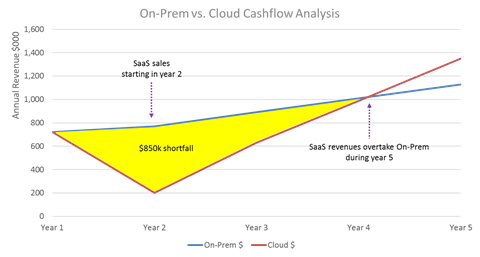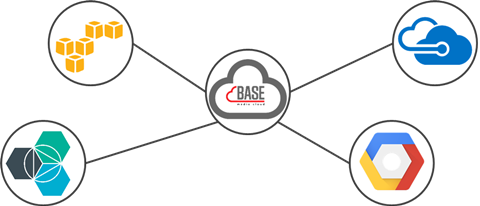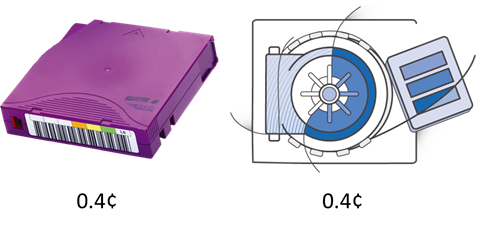With 85% of media and broadcast industry buyers planning to deploy cloud technology within the next three years - according to the latest IABM End-User Survey - the pressure is on vendors and technology suppliers to embrace cloud and as-a-service solutions and business models.
If vendors ignore cloud, or make a half-hearted attempt at it, they risk giving up an increasing slice of their market to a new generation of nimble cloud-native providers. But making the transition to a true cloud model is fraught with dangers - and the risk of a massive cashflow black hole.
Learning from some of the emerging cloud specialists, there are five simple lessons that all vendors can use as they adopt a new way of supplying and charging for their products. These approaches will help maximise the chances of success and reduce the chance of catastrophic failure.
Lift and Shift
Beware the vendor who claims to have a cloud solution by simply taking their existing on-premise product and hosting it in a public cloud environment like Amazon Web Services (AWS). The giveaway phrase is often “private cloud”. A true cloud strategy must embrace many parts of the business.
Technology: solutions should be designed to benefit from cloud architecture - for example the ability to scale up or down as needed, support for a multi-region deployment or multi-tenant operation, or the use of existing cloud services like AWS Lambda - no need to build everything from scratch. Running a regular application in a reserved AWS instance not only misses most of the benefits of cloud, but is likely to be financially crippling. The days of highly-customised solutions may be over as multiple customers share the same environment.
Sales: can the vendor move from a fixed-cost solution to a charging model that scales up and down? Is there a free tier? A vendor who is serious about cloud must incentivise sales people to sell it over the traditional products. Sales compensation can be tricky when there is no big up-front sales revenue, or where pay-as-you-go pricing means the total price to the customer is not known up front. A higher-volume, lower-cost “inside sales” model may be more appropriate, and there is a need to invest in customer success managers to drive usage and renewals.
Security: vendors become responsible for handling their customers’ most valuable content and data. Every aspect of physical and logical security needs careful review, with tightly-managed operational procedures. Cloud customers expect to see evidence of this, and may demand external audits and certification such as the ISO 27001 information security standard.
Revenue: the biggest challenge of all is making the transition from an up-front high-value charging model to a recurring revenue model. In the long run, the recurring revenue leads to a much more stable, more valuable business. But getting there can leave a seven-year black hole in the cashflow. This becomes clear with a worked example.
Acme Inc. is a small vendor which has traditionally sold $100k solutions, with 20% support on top, and has steady sales of six deals per year, mostly in the third and fourth quarter. The cashflow shown in the blue line in the diagram is healthy, and covers the cost of running the business, developing the technology and paying the sales people.

If Acme’s customers demand a cloud model and the company switches to a software-as-a-service (SaaS) charging at $5000 per month at the start of year two, the revenue that year dives from $770k to just $200k - even including the ongoing support revenues from before. It is not until into year five that the run rate of SaaS revenues finally rises above the old model. That leaves a $850k shortfall - a black hole in the accounts that isn’t cleared until year seven.
This is a simplified model - it assumes no SaaS customers cancel, it ignores the significant costs to Acme of actually running the cloud services, and it overlooks the fact that a “real” cloud model would have less predictable usage-based pricing.
Acme’s management needs to have a plan to manage this cashflow black hole for as long as ten years—through financing, understanding investors or aggressive increases in sales.
IBC365 Webinars: Making media operations work in the cloud
More than AWS
Aligning with just one public cloud vendor is unlikely to lead to the best technological or commercial solution. Many media and broadcast customers also demand more flexibility - particularly with hybrid cloud solutions that blend on-premise workloads with cloud services.
One innovative approach is being used by Base Media Cloud, a UK-based provider with its own cloud content management solution, and a model for making other vendors’ products available in the cloud to end users.
Base MC manages a core private cloud data centre in the UK, enabling them to operate much more cost effectively than consuming public cloud for the base service. But the company is now building direct-connects to many of the public cloud providers to tap into the services and capabilities provided there.
This strategy avoids lock-in to any one public cloud provider. The best cloud solutions can pick and mix, and move house whenever the cost model or technology capabilities demand.

Solving problems
It is all too easy for media businesses and vendors to put off a move to cloud-based services by focusing on the potential barriers. Complaints may include the high cost of bandwidth or “egress fees” for retrieving content from cloud storage. The perceived risk of on-demand pricing. Or supposed technical issues such as the performance of cloud object storage or cloud video editing.
Hiding behind these type of problems is missing the point. There is a huge opportunity here and now for innovative vendors able to solve these, and many other, problems that might otherwise prevent broadcasters and media companies unlocking the huge benefits of cloud. These new competitors are gaining valuable intellectual property and a competitive advantage in the process. With 85% of buyers wanting cloud solutions, there is a profitable business in helping them do it.
Compelling economics
Many “cloud objections” are financial. Some customers and vendors feel cloud can be expensive, even more expensive than on-premise. In a lift-and-and-shift of an on-premise application into AWS, paying for a fixed reserved instance to meet hypothetical peak demand, then indeed it is highly likely that the resulting costs will be too high.
However, many organisations are not evaluating the full costs of running on-premise technology when comparing cloud costs. It is crucial to build a return-on-investment model that captures all of the costs involved. For on-premise, this should include the cost of software, support, servers, databases, operating systems, network infrastructure, monitoring, floor space, power, cooling, staff, backups, maintenance, patches, upgrades, hardware refresh, redundancy. The list goes on.
For example, in archive storage, the base cost of Amazon Glacier is now exactly comparable to LTO6 media, at 0.4 cents per Gigabyte. Some may argue that this shows LTO is just as cost effective as Glacier and will highlight Amazon’s egress charges. But this risks ignoring the full cost of running an on-premise archive - the robotic library, drives, floorspace, power, maintenance, refresh cycles, etc.
Those egress charges can be reduced through proper cloud solution design. If the content is pulled back to S3 storage in the same AWS region - because that is where the rest of the content supply chain services happen - data transfer is free. The retrieval cost is then just 0.25 cents per GB for the archive retrieval, less than 25 cents for a two-hour HD movie.

Making cloud economics work is another opportunity for innovative solutions. For example, Sundog Media Toolkit, a post-production cloud platform, runs its own internal “spot instances” to allocate the lowest-cost computing resources to post-production rendering jobs without the risk of a public-cloud spot instance disappearing mid-job. Prime Focus Technologies’ CLEARTM Operations Cloud Optimizer automatically calculates when to transcode in AWS at lowest possible cost.
Start now
The new generation of innovative cloud-native vendors share three final tips for success.
First, cloud strategy needs complete commitment across all parts of the business, led by the CEO. They should not claim to have a cloud strategy without knowing how to fill the finance black hole, or where they are still compensating field sales for bringing home traditional deals.
Second, start now. Set up a skunkworks - there will be people in the organisation who are eager to work on cloud. Develop native cloud solutions, technology and business models. Be innovative, and become one of the new generation of vendors who makes cloud work for broadcast.
Third, if in doubt, get help. Many of the cloud-native companies mentioned here are also in the business of making cloud work for other vendors. They can put the right finance, integration, implementation and services wrapper around existing products and services to make them ready for an on-demand cloud technology and commercial model.
Robert Ambrose discussed cloud during a session at NAB 2017.
Read more: NAB 2017: vendors flock to the cloud
























No comments yet